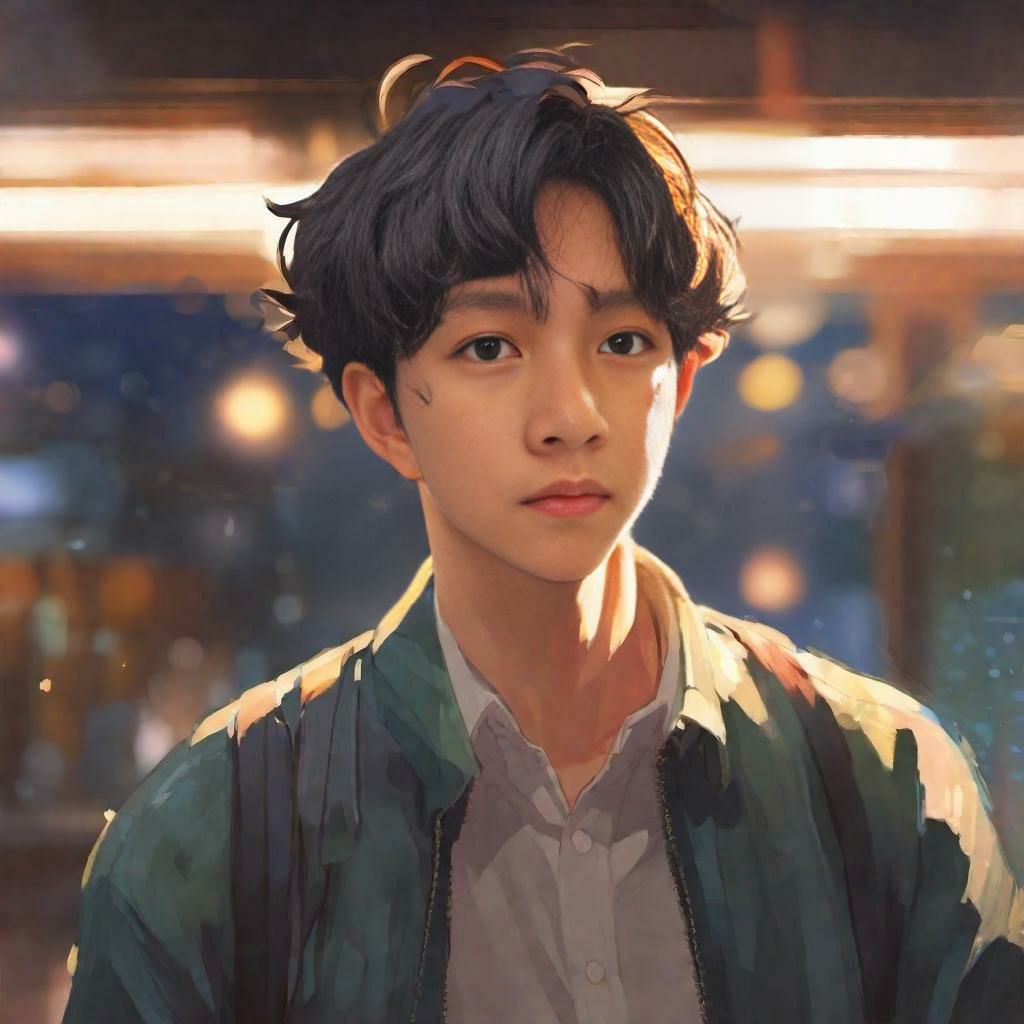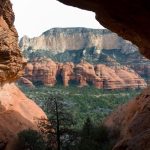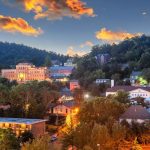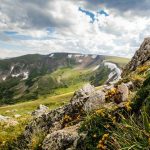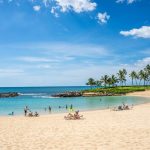Indiana offers diverse attractions, from vibrant cities to rolling hills and pristine beaches. The best places to visit include Indianapolis, Brown County, Indiana Dunes, and New Harmony. Other standout destinations are Madison, Nashville, French Lick, and Turkey Run State Park.
Keep reading as we explore the best places to visit in Indiana that will transform your Midwest adventure into an unforgettable journey.
List of Contents
- 1. Indianapolis: Racing Capital of the World
- 2. Brown County: Indiana's Little Smokies
- 3. Indiana Dunes: Sahara on Lake Michigan
- 4. New Harmony: Utopian Experiment
- 5. Madison: Steamboat Gothic Architecture
- 6. Nashville: Artists' Haven in the Hills
- 7. French Lick: Gilded Age Grandeur
- 8. Turkey Run State Park: Rugged Canyon Beauty
- 9. McCormick's Creek: Indiana's First State Park
- 10. Bloomington: College Town Culture
- 11. Fort Wayne: Rivers and Culture
- 12. Evansville: Ohio River Culture
- Your Indiana Adventure Awaits
1. Indianapolis: Racing Capital of the World
Indianapolis pulses with motorsport energy year-round. The Indianapolis Motor Speedway hosts the legendary Indy 500, drawing over 300,000 spectators each May. The city's downtown core stretches in perfect walkable blocks.

I remember standing on the yard of bricks at the speedway finish line at dawn. The silence before race day carries weight—you feel the ghosts of champions who crossed that same spot.
The Indianapolis Cultural Trail connects neighborhoods through 8 miles of bike paths and art installations. Local tip: grab a tenderloin sandwich from any corner diner—they're massive and uniquely Indiana.
Quick Facts:
- Peak season: May (Indy 500), September-October
- How to get there: Indianapolis International Airport, I-65/I-70 intersection
- Entry fees: From free (downtown) to $50+ (speedway events)
- Suggested stay: 2-3 days
- Must-see: Indianapolis Motor Speedway, White River State Park, Mass Ave, Fountain Square
2. Brown County: Indiana's Little Smokies
Brown County transforms into a painter's palette each October. Rolling hills stretch endlessly, covered in sugar maples and oak trees that blaze orange and crimson. This is Indiana's landscape at its most dramatic.

Nashville serves as the county seat, though it's nothing like its Tennessee namesake. Art galleries line the main street. Local craftspeople sell hand-carved furniture and pottery.
Brown County State Park offers 15,000 acres of hiking trails. The fire tower provides views that stretch to the horizon. Visit midweek in fall—weekends bring crowds that can clog the narrow country roads.
Quick Facts:
- Peak season: September-October (fall foliage)
- How to get there: 1 hour south of Indianapolis via Highway 46
- Entry fees: From free (town) to $7 (state park)
- Suggested stay: 2 days
- Must-see: Brown County State Park, Nashville shops, Hesitation Point, fire tower
3. Indiana Dunes: Sahara on Lake Michigan
Indiana Dunes stretches along 15 miles of Lake Michigan shoreline. Sand dunes rise 200 feet above the water, creating an unexpected desert landscape in the Midwest. Mount Baldy, the park's tallest dune, moves inland about 4 feet each year.

The beach here rivals any ocean coastline. Swimming is possible from June through September, though the water stays cold even in summer. Bring layers—lake breezes cut through light clothing.
Over 370 bird species migrate through this corridor. Spring brings warblers by the thousands. Pack binoculars and patience.
Quick Facts:
- Peak season: June-August (beach), April-May (bird migration)
- How to get there: I-94 to US-12, 45 minutes from Chicago
- Entry fees: From free to $6 per vehicle
- Suggested stay: 1-2 days
- Must-see: Mount Baldy, West Beach, 3 Dune Challenge, Portage Lakefront
4. New Harmony: Utopian Experiment
New Harmony began as a utopian community in 1814. German settlers created a self-sufficient society focused on equality and education. The experiment lasted only a decade, but the architecture remains.

Philip Johnson designed the Roofless Church in 1960—a modernist structure open to the sky. Inside, Jacques Lipchitz's sculpture “The Descent of the Holy Spirit” commands attention. The contrast between old brick buildings and contemporary design creates visual tension.
Walk the Labyrinth at sunset. This circular stone path winds inward toward a center point. Locals say it clears the mind, though skeptics find it simply peaceful.
Quick Facts:
- Peak season: April-October
- How to get there: US-460, 2 hours from Louisville
- Entry fees: From free to $10 (historic tours)
- Suggested stay: 1 day
- Must-see: Roofless Church, Historic District, Labyrinth, Workingmen's Institute
5. Madison: Steamboat Gothic Architecture
Madison clings to the Ohio River with Victorian elegance intact. Over 130 blocks of historic architecture earned National Historic Landmark status. Steamboat Gothic mansions line tree-shaded streets.

The Lanier Mansion stands as Madison's crown jewel. Built in 1844, its Greek Revival columns face the river. Inside, spiral staircases wind three stories without visible support—an engineering marvel of its time.
Main Street slopes directly down to the water. During spring floods, sandbags stack along the riverfront. Local businesses have flood plans that date back generations.
Quick Facts:
- Peak season: April-October
- How to get there: Highway 56, 1.5 hours from Louisville
- Entry fees: From free (walking tours) to $8 (mansion tours)
- Suggested stay: 1-2 days
- Must-see: Lanier Mansion, Main Street, Clifty Falls State Park nearby
6. Nashville: Artists' Haven in the Hills
Nashville sits in Brown County's heart, but deserves separate recognition. This tiny town became an artists' colony in the early 1900s. Galleries and studios occupy nearly every building on Van Buren Street.

The original log courthouse still stands in the town square. Built in 1837, it's Indiana's oldest courthouse. During autumn, the square fills with craft vendors and the smell of kettle corn.
I watched a glassblower create a vase one October afternoon. His hands moved with practiced precision while tourists pressed against the windows. That's Nashville—art as daily life, not weekend hobby.
Quick Facts:
- Peak season: September-October, December (Christmas)
- How to get there: Highway 46, within Brown County
- Entry fees: Free (town browsing)
- Suggested stay: Half day to 1 day
- Must-see: Art galleries, log courthouse, Nashville House restaurant
7. French Lick: Gilded Age Grandeur
French Lick built its reputation on sulfur springs and grand hotels. The French Lick Resort dates to 1845, when guests came to “take the waters” for health benefits. Today, the restored hotel maintains its Gilded Age elegance.
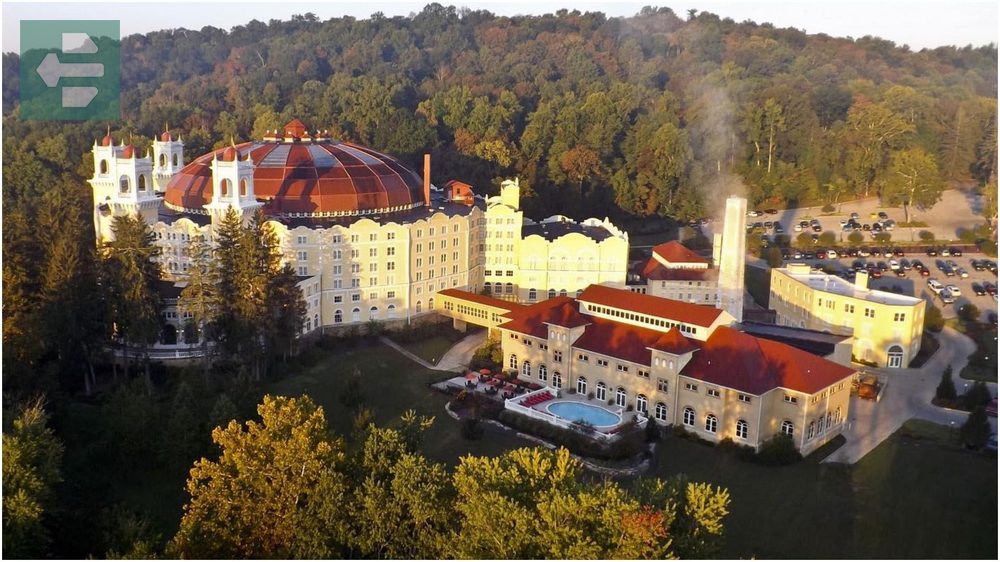
The West Baden Springs Hotel features a stunning atrium—once the largest free-span dome in the world. Walking into this space feels like entering a European cathedral. Natural light floods through the glass ceiling.
Don't miss the scenic railway that runs between the two historic hotels. The 20-minute ride passes through southern Indiana's rolling countryside. Local tip: book the dinner train for views with your meal.
Quick Facts:
- Peak season: May-October, December holidays
- How to get there: I-64 to Highway 56, 1 hour from Louisville
- Entry fees: From free (hotel browsing) to $25+ (railway)
- Suggested stay: 1-2 days
- Must-see: West Baden atrium, French Lick Resort, scenic railway
8. Turkey Run State Park: Rugged Canyon Beauty
Turkey Run carved deep sandstone canyons through millions of years of water erosion. These gorges create Indiana's most dramatic hiking terrain. Trail 3 leads through the main canyon, where walls rise 70 feet overhead.
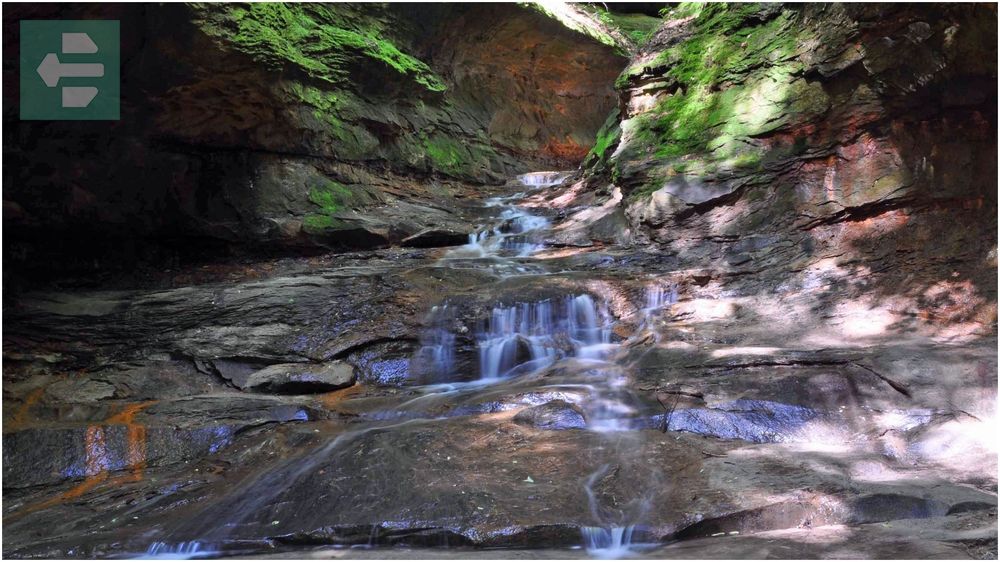
The park preserves one of Indiana's last virgin forests. Beech and maple trees tower 150 feet high. Some specimens predate European settlement by centuries.
Sugar Creek flows along the park's eastern boundary. Canoe rentals operate from the covered bridge—a photogenic starting point. The water runs clear and cold, even in summer heat.
Quick Facts:
- Peak season: April-October (hiking), September-October (fall colors)
- How to get there: US-41 to Highway 47, 1 hour from Indianapolis
- Entry fees: $7 per vehicle
- Suggested stay: 1-2 days
- Must-see: Trail 3 canyon, covered bridge, Sugar Creek, virgin forest
9. McCormick's Creek: Indiana's First State Park
McCormick's Creek earned the honor of Indiana's first state park in 1916. The creek cuts a limestone canyon through dense forest. Wolf Cave extends 40 feet into the hillside—shallow enough for amateur explorers.
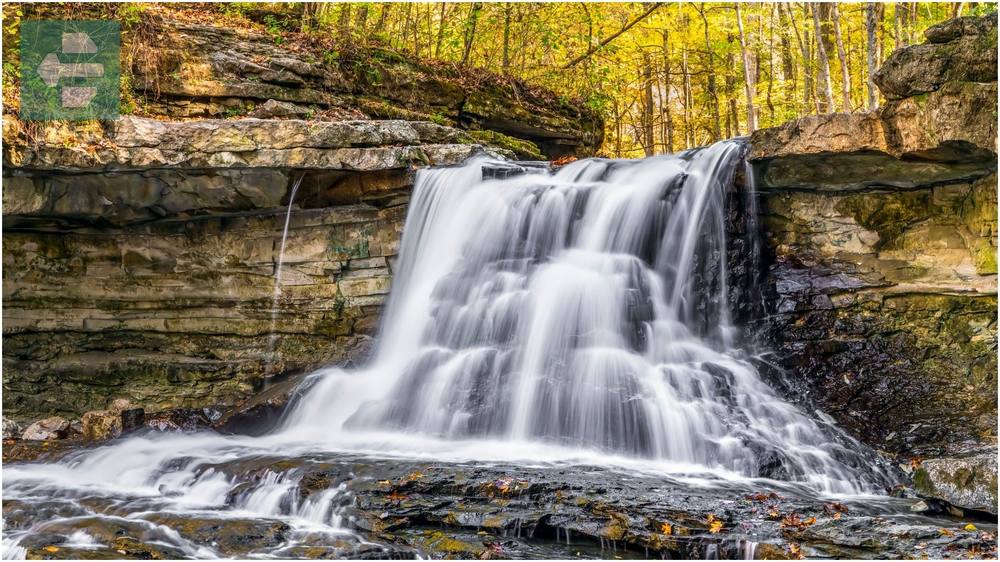
The stone fire tower provides views across the White River valley. Built by the Civilian Conservation Corps in the 1930s, it stands as a testament to Depression-era craftsmanship.
Spring brings wildflower displays that carpet the forest floor. Trillium, bloodroot, and wild ginger bloom in succession from March through May. Early morning visits offer the best photography light.
Quick Facts:
- Peak season: April-May (wildflowers), September-October
- How to get there: Highway 46, 30 minutes from Bloomington
- Entry fees: $7 per vehicle
- Suggested stay: 1 day
- Must-see: Wolf Cave, fire tower, waterfall, limestone canyon
10. Bloomington: College Town Culture
Bloomington revolves around Indiana University, but offers attractions beyond campus life. The courthouse square anchors downtown with local shops and restaurants. Saturday farmers markets bring the community together.

The IU Art Museum houses 45,000 works spanning ancient to contemporary periods. I.M. Pei designed the building—his angular concrete structure contrasts sharply with campus's traditional limestone architecture.
Lake Monroe stretches south of town, providing the largest body of water in Indiana. Sailing, fishing, and swimming draw locals year-round. The lake never fully freezes, making it a winter refuge for waterfowl.
Quick Facts:
- Peak season: September-November (campus), May-August (lake)
- How to get there: Highway 37, 1 hour from Indianapolis
- Entry fees: From free (downtown) to $5 (art museum)
- Suggested stay: 1-2 days
- Must-see: IU campus, courthouse square, IU Art Museum, Lake Monroe
11. Fort Wayne: Rivers and Culture
Three rivers converge in Fort Wayne—the St. Marys, St. Joseph, and Maumee. This confluence made the city a natural trading post for centuries. Today, the Rivergreenway system provides 25 miles of trails along these waterways.

The Fort Wayne Museum of Art specializes in American contemporary works. Its glass facade reflects the downtown skyline. Inside, rotating exhibitions showcase regional and national artists.
The historic Old Fort reconstruction sits near the original 1794 site. Interpreters demonstrate frontier life during summer months. Weekend events include musket demonstrations and traditional craft workshops.
Quick Facts:
- Peak season: May-September
- How to get there: I-69, 2 hours from Indianapolis
- Entry fees: From free (riverwalk) to $12 (museum)
- Suggested stay: 1-2 days
- Must-see: Rivergreenway, Museum of Art, Old Fort, downtown
12. Evansville: Ohio River Culture
Evansville hugs the Ohio River's northern bank, where the waterway curves in a dramatic horseshoe bend. This location earned the city its nickname: the “Crescent City of the South.” Riverfront parks provide views across to Kentucky.

The Reitz Home Museum preserves Second Empire architecture from 1871. Seventeen rooms display original furnishings and Gilded Age opulence. The mansion's tower provides elevated city views.
Mesker Park Zoo spans 50 acres and houses over 700 animals. The zoo's train circles the entire property—a family tradition since 1958. Local families have ridden this same route for generations.
Quick Facts:
- Peak season: April-October
- How to get there: I-64, 2 hours from Louisville
- Entry fees: From free (riverfront) to $15 (zoo)
- Suggested stay: 1-2 days
- Must-see: Riverfront, Reitz Home, Mesker Park Zoo, downtown historic district
Your Indiana Adventure Awaits
Indiana's best places offer more than expected from a Midwest destination. From racing excitement in Indianapolis to artistic inspiration in Nashville, each location provides distinct experiences.
The state rewards curious travelers. Those who venture beyond interstate highways discover limestone canyons, pristine beaches, and historic communities.
Pack comfortable walking shoes and an open mind. Indiana's treasures reveal themselves slowly, like morning mist lifting from Brown County's hills.
Your journey through the best places to visit in Indiana begins with a single step off the beaten path.

